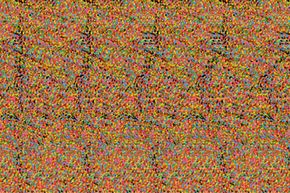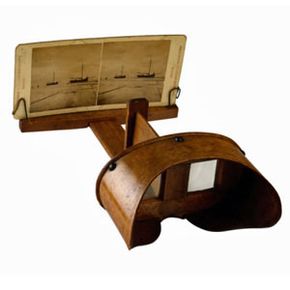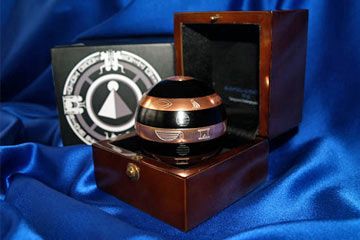Ever since James Cameron released his award-winning movie "Avatar" in 3-D, it seems everyone and everything is jumping on the 3-D wagon. Next it was more 3-D movies, then 3-D television in your home -- all with the help of not-so-stylish 3-D glasses.
But remember back in the 1990s when 3-D could be achieved without the dorky glasses? Autostereograms, or eye puzzles, saw their hay day back in the '90s with the popularity of brands like Magic Eye. You probably remember them hanging in the back of an art or poster store where there would be a crowd of people ogling a rather psychedelic looking image. The scrutinizers would either exclaim with glee that they could see a 3-D object pop out at them from the chaos or with frustration that they just couldn't make sense of the crazy image. With all this 3-D hubbub, will the 3-D illusions known as eye puzzles make a come-back? Or is it these older 3-D illusions that have influenced today's media?
Advertisement
The latest 3-D technology available on certain cell phones, and the new Nintendo 3DS are one step closer to eye puzzles in that they do not require the use of 3-D glasses to see the illusion. However, they don't take the work eye puzzles do to uncover the illusion. So why go through the trouble of crossing your eyes and trying to "see through" the image to solve an eye puzzle? Well, some doctors say the action of solving eye puzzles may actually be beneficial, especially to patients who suffer from depth perception issues. Others claim it can be stress relieving, since the key to solving an eye puzzle is to relax the muscles in your eyes. But healthy side effects aside, solving eye puzzles is just plain fun. Especially when you can solve them before your friends can.
To understand how the "magic" happens, we first need to understand how the eye works. To learn how 3-D vision is possible, read on to the next page.
Advertisement





